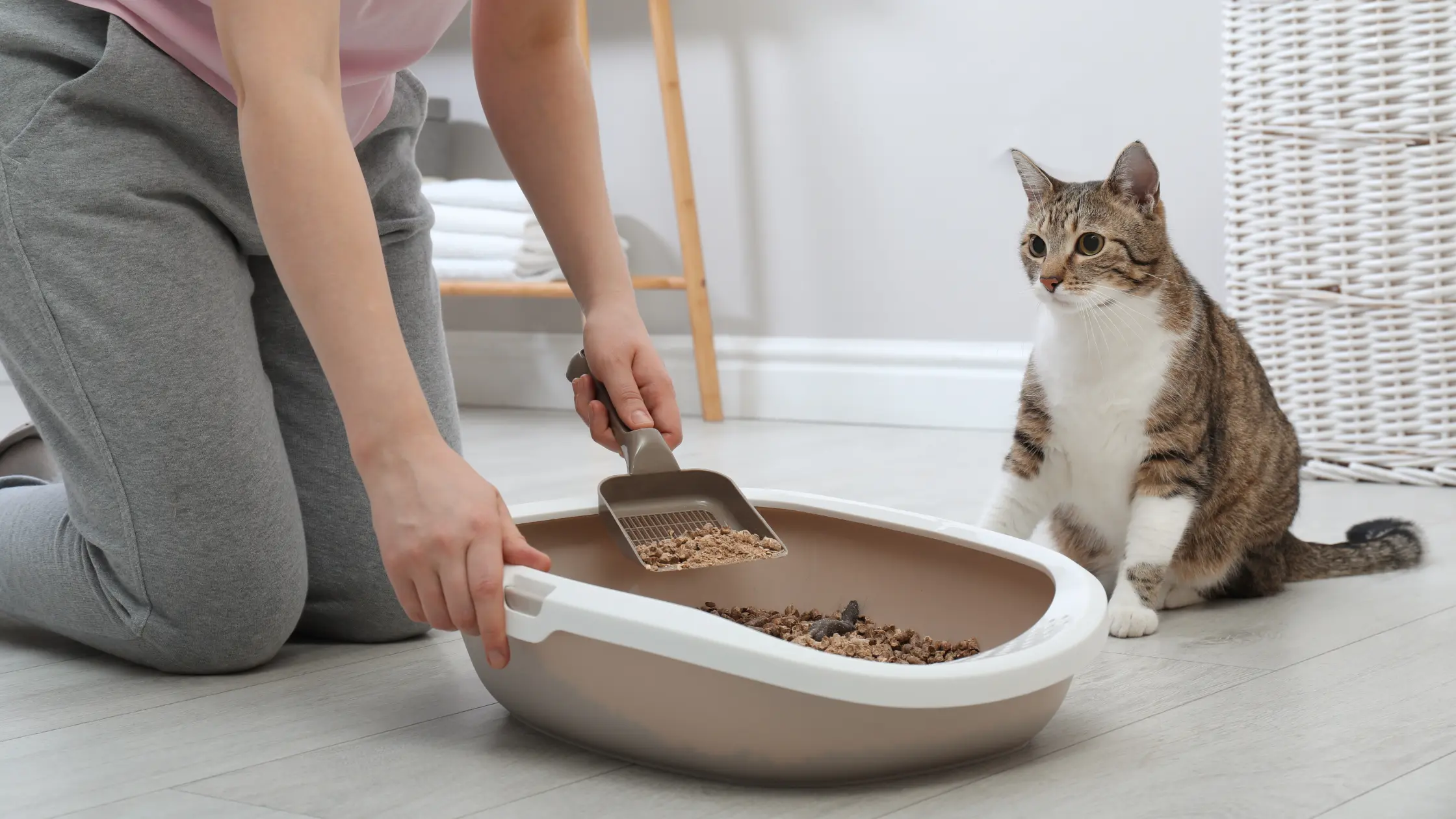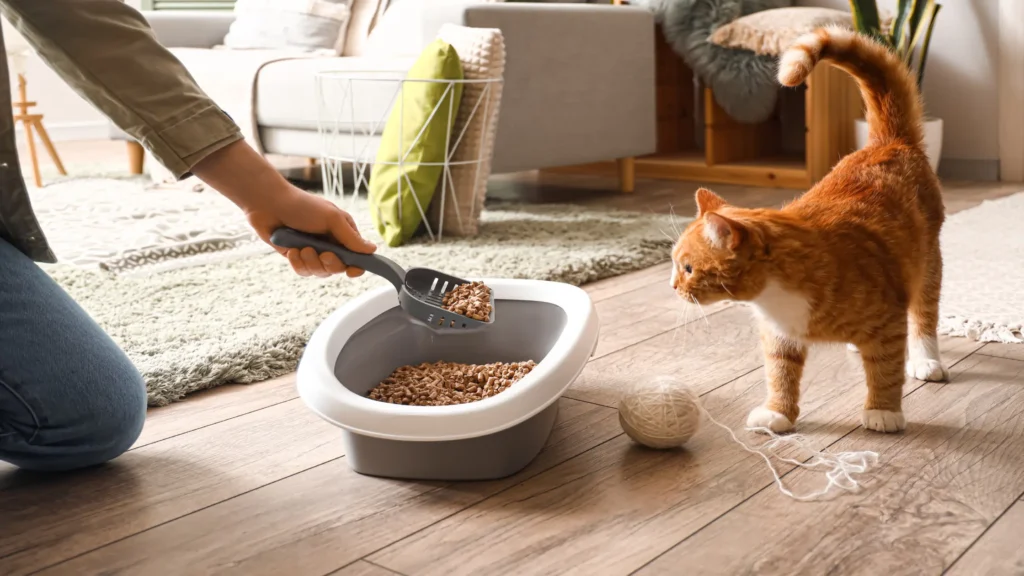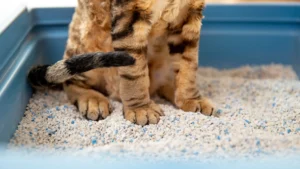As a cat owner, ensuring the litter box stays fresh and clean is essential for your feline friend’s hygiene and happiness. But how do you know when to toss the litter and replace it with something new? The answer may surprise you – cat litter can expire! Let’s explore what expiration means for different litter types, signs it’s time to change, and storage hacks to get the most out of every bag and try to know does cat litter expire ?
Does All Cat Litter Expire?
Cat parents often wonder whether cat litter, such as food or other household items, expires. The answer depends on the type of litter. Clay and silica gel litters, the most popular choices, don’t have a set expiration date since they contain nothing perishable. However, they can become less effective over time. Natural litter made from wood shavings or paper pulp is more susceptible to expiry within about a year. They lose absorbency and may develop mold or mildew as they break down.
Biodegradable options from corn, wheat, or other plants can also degrade faster than clay. While cat litter won’t formally “expire,” all varieties can decline in quality and usefulness if not stored properly. Signs like poor clumping, solid odors, or visible mold growth indicate it’s past its prime to provide a clean, comfy place for kitty to do their business.
Factors Affecting Shelf Life
A few key factors determine how long different litter types will maintain their absorption, clumping, and odor control abilities: Litter Composition – As mentioned, natural materials like wood break down quicker than clay minerals. Moisture Exposure – Keeping litter dry is crucial, as moisture allows bacterial/fungal growth and reduces absorbency. Temperature – Extreme heat or cold during storage can damage some litters faster than others. Sealing – Opening litter bags/containers invites moisture infiltration and shortens shelf life. Understanding these shelf-life influencers allows you to maximize how long your litter investment will adequately serve your furry friend’s needs.
Signs of Expired Cat Litter
There are a few telltale signs it’s time to toss expired litter and replace it with something fresh: Poor Odor Control – If litter no longer absorbs odors effectively, its absorbency has declined. Issues Clumping Properly – Clay litters may produce loose, soggy clumps that don’t scoop clean. Changes in Texture/Color – Noticeable breakdowns like sogginess or discoloration have occurred. Visible Mold or Mildew Growth – Fungal growth breeds harmful bacteria and reduces performance. Distinct Unpleasant Smell – A rotten or chemical odor versus its usual scent merits replacement. By familiarizing yourself with these red flags of expired litter, you can safeguard your furry friend’s health and hygiene.
Proper Cat Litter Storage Tips
Maximizing litter shelf life is easy when you follow some basic storage guidelines:
Choose a Dry, Cool Place
The pantry, closet, or basement are better than damp areas like the garage. Avoid direct sunlight exposure, too.
Keep Litter Sealed Tightly
Clips or Ziploc bags should be used to maintain a moisture-proof barrier on open bags until use.
Avoid Temperature Extremes
Fluctuating heat and chill can compromise some litters quicker than steady room temps.
Inspect Before Use
Check for any dampness in long-stored litter that could impact its odor control.
Consider Smaller Quantities
Smaller bags reduce the risk of expiring if you have one cat or change litter infrequently. Proper storage is key to protecting your investment in cat litter and assuring it will perform its essential functions until the last scoop. Use these techniques to maximize its shelf life potential. 
Signs Your Cat’s Litter Needs Changing
As mentioned, there are definite signs to look out for that indicate expired litter requiring replacement:
Declining Odor Absorption
If ammonia and other bathroom smells aren’t controlled, litter absorbency will likely diminish.
Poor or Loose Clumping
Clay litter may produce soggy clumps that break apart, making scooping complex and messy.
Textural or Color Changes
Noticeable breakdown signs like discoloration or a gritty texture demand tossing and refreshing.
Visible Mold or Mildew
The presence of visible fungi signals harmful bacteria growth that impacts absorbency.
Distinct Unpleasant Scent
Compared to its typical fragrance, a rotten, chemical, or sour smell means it’s lost effectiveness. By recognizing when litter begins exhibiting these expiry signals, you safeguard your cat’s comfort, health, and cleanliness with an effective litter material. Don’t hesitate to change it once these red flags appear!
Maximizing Your Litter Investment
The key to getting the most use from your cat litter purchase is proper storage techniques and monitoring for expiry signs. Some additional tips:
- Purchase smaller quantities if you have one cat or change infrequently to reduce the risk of expiration
- Try mixing a bit of fresh litter into expired litter to refresh it instead of a complete replacement
- Consider clumping litter, which usually maintains performance longer than other types
- Add baking soda to litter boxes to help neutralize odors as litter absorbs less over time
With awareness of shelf life factors and a perceptiveness for signs of expiry, cat owners can optimize litter lifespan while providing the freshness their furry friends need and deserve. Don’t hesitate to swap out old litter for a clean, low-odor experience.
Frequently Asked Questions About Cat Litter Expiration:
Can I still use expired cat litter?
While expired litter may still work somewhat, it’s best avoided as it won’t control odors or clump effectively. Using expired litter can also introduce bacteria to your home.
How do I know if my cat litter is expired?
Key signs include poor odor control, loose clumping, texture/color changes, visible mold/mildew, and powerful scents. Be aware of these signals that declare it’s time for replacement.
Can I mix fresh and expired litter?
Lightly mixing a small amount of fresh litter into an almost-expired batch can help refresh it versus complete replacement. But fully expired litter should always be discarded.
What’s the shelf life of different litter types?
Clay and silica gel litters last longest at 1-2 years typically. Depending on storage conditions, natural and plant-based options like wheat or paper degrade faster at 6-12 months,
Should I store litter in the garage?
No, high humidity levels in garages rapidly accelerate litter expiration. Opt for cool, dry places like pantries and sealed containers to prolong shelf life.
FAQs about Does Cat Litter Expire
Can expired cat litter harm my cat?
A: Expired cat litter can pose health risks to your cat due to mold growth and bacterial contamination.
How often should I replace cat litter?
A: It’s recommended to replace cat litter regularly, ideally once a week for clumping litter and every two weeks for non-clumping litter.
Can I use expired cat litter in my garden?
A: It’s not advisable to use expired cat litter in your garden due to potential contamination and health risks for plants and soil.
Can I donate expired cat litter to animal shelters?
A: Animal shelters typically prefer donations of fresh cat litter to ensure the health and well-being of shelter animals.
Useful Equipment
Let us know down below if you found this article helpful. Are there any other topics you would like us to touch on?
If you are a cat or pet lover in general here are a few more articles you may find interesting:
- THE 50 BEST MALE & FEMALE DOG NAMES
- THE TOP 10 MOST EXPENSIVE CATS IN THE WORLD
- HOW TO TRAIN A KITTEN TO USE A LITTERBOX
- THE TOP 10 MOST POPULAR CAT BREEDS IN THE WORLD
- WHY DO CATS HATE WATER SO MUCH? THE COMPLETE GUIDE FOR CAT OWNERS


